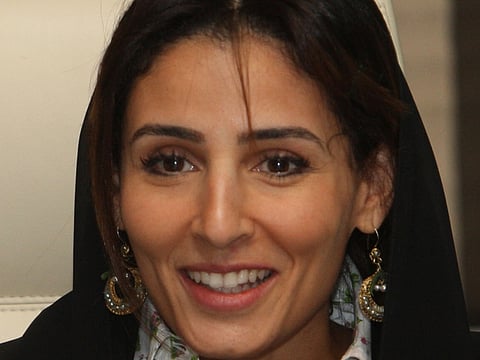Abu Dhabi takes steps to reduce ecological footprint
Solar and nuclear power plants to reduce green house gas emissions from energy sector

Abu Dhabi
An operational solar project in Abu Dhabi will help reduce 175,000 tonnes of CO2 every year, while the four nuclear plants, when they get operational, are expected to cut down on 12 million tonnes of carbon emissions annually by 2020.
These projects gain relevance because the energy sector accounts for 72.6 per cent of green house gases generated in Abu Dhabi, according to an overview of the emirate’s environment released by the environment-agency Abu Dhabi on the eve of the World Environment Day (WED).
The snapshot highlights the emirate’s key environmental challenges and some of the remedial steps that EAD and other government entities are undertaking.
The WED’s theme for this year “Seven Billion Dreams, One Planet, Consume with Care” expresses the challenge of creating opportunities for inclusive and sustainable economic development, while attempting to stabilise the rate of resource use and reduce environmental impact.
Razan Khalifa Al Mubarak, Secretary General of EAD, said the responsibility of careful environmental stewardship lies not just with government alone, but with every citizen and resident. “We all need to “consume with care” and contribute to a better environmental future,” she said.
The Ministry of Environment and Water on Thursday released the first UAE State of Environment Report 2015 in Expo Milan in conjunction with the World Environment Day. The report reviews UAE’s current environmental situation, highlights the challenges faced by different sectors, and offers recommendations to protect the environment from these effects. The report is yet to be released in the UAE.
Dr Rashid Ahmad Bin Fahd, Minister of Environment and Water, said UAE residents’ excessive consumption of resources may be higher than other regions in the world due to the country’s development, population growth, and improved income levels. Over-consumption affects the country’s ecological footprint, fresh water uptake, waste production, and greenhouse gas emissions, all of which are being recorded at levels higher than the global average.
Bin Fahd said UAE authorities’ combined efforts to address the situation has resulted in a decrease of per capita ecological footprint from 11.8 global hectares in 2006 to 7.75 global hectares in 2014.
The greenhouse gas emissions per person also decreased from 39.5 tons in 1994 to 20.6 tons in 2012. Bin Fahd expects further reduction over the next few years with the completion of many essential projects in the field of renewable energy.
Here’s an overview of how Abu Dhabi is working in various domains to reach it environmental goals.
Climate change
Climate change, a global problem, is caused by increase in temperatures and sea levels, and extreme weather due to an accumulation of Greenhouse Gases (GHG) in the atmosphere.
With the energy sector generating most of the GHG emissions, clean energy projects are the answer. When Masdar’s 100 megawatt Shams-1 solar project displaces 175,000 tonnes of CO2 every year, that is equivalent to planting 1.5 million trees or taking approximately 15,000 cars off the road.
Air quality
As carbon emissions from transportation affects air quality, the upcoming Etihad Railway projects offers hope. When the project, as part of the GCC railway, becomes operational by 2017, greenhouse gases will fall by more than 2.2 million tonnes annually; that’s the equivalent of removing 375,000 vehicles off the roads or planting 52 million trees.
A single freight train can carry the load of up to 300 trucks; this is equivalent to making room on highways for more than 1,000 cars. As the number of vehicles in the emirate is a concern, the government is promoting low-sulphur diesel and Compressed Natural Gas (CNG) as alternative fuel choices.
The EAD has 20 air quality monitoring stations that constantly monitor particulate matter (PM) and ozone (O3), the pollutants that regularly exceed UAE federal limits, and other pollutants too.
Biodiversity
Of Abu Dhabi’s rich biodiversity, the fish stock is the worst affected with 78 per cent over-exploitation. For the first time, a nationwide integrated fisheries research plan in the UAE is expected to address this issue.
Abu Dhabi has a rich biodiversity with 793 terrestrial and marine animal species, of which 46 are threatened. Of 414 plant species in the emirate, nine are threatened,
Marine water quality
Abu Dhabi has around 50,000 (fifty thousand) square kilometres of marine area and 700km of coastline. Overall marine water quality is good at public beaches. Many of the beaches have got Blue Flag certification, an international environmental certification.
The government adopted a zero waste water discharge to sea policy and will reuse all treated water for irrigation.
Water
On average, each Abu Dhabi resident uses 550 litres of water a day against the international average of 170 to 300 litres, hence EAD and other relevant authorities have stepped up awareness campaigns to reduce consumption.
Abu Dhabi’s total consumption of water resources reached 3.3 billion cubic metres in 2011 and it is expected that the demand for water will increase to about 5 billion cubic metres by 2030.
The current usage of groundwater reservoirs is about 15 times more than the natural recharge rates.
Waste
As only 27 per cent waste is recycled in the emirate, steps are being taken to increase this number. The government has adopted a strategy of reduce, reuse and recycle to tackle the increasing waste generation in proportion to the growing population.
Sign up for the Daily Briefing
Get the latest news and updates straight to your inbox



